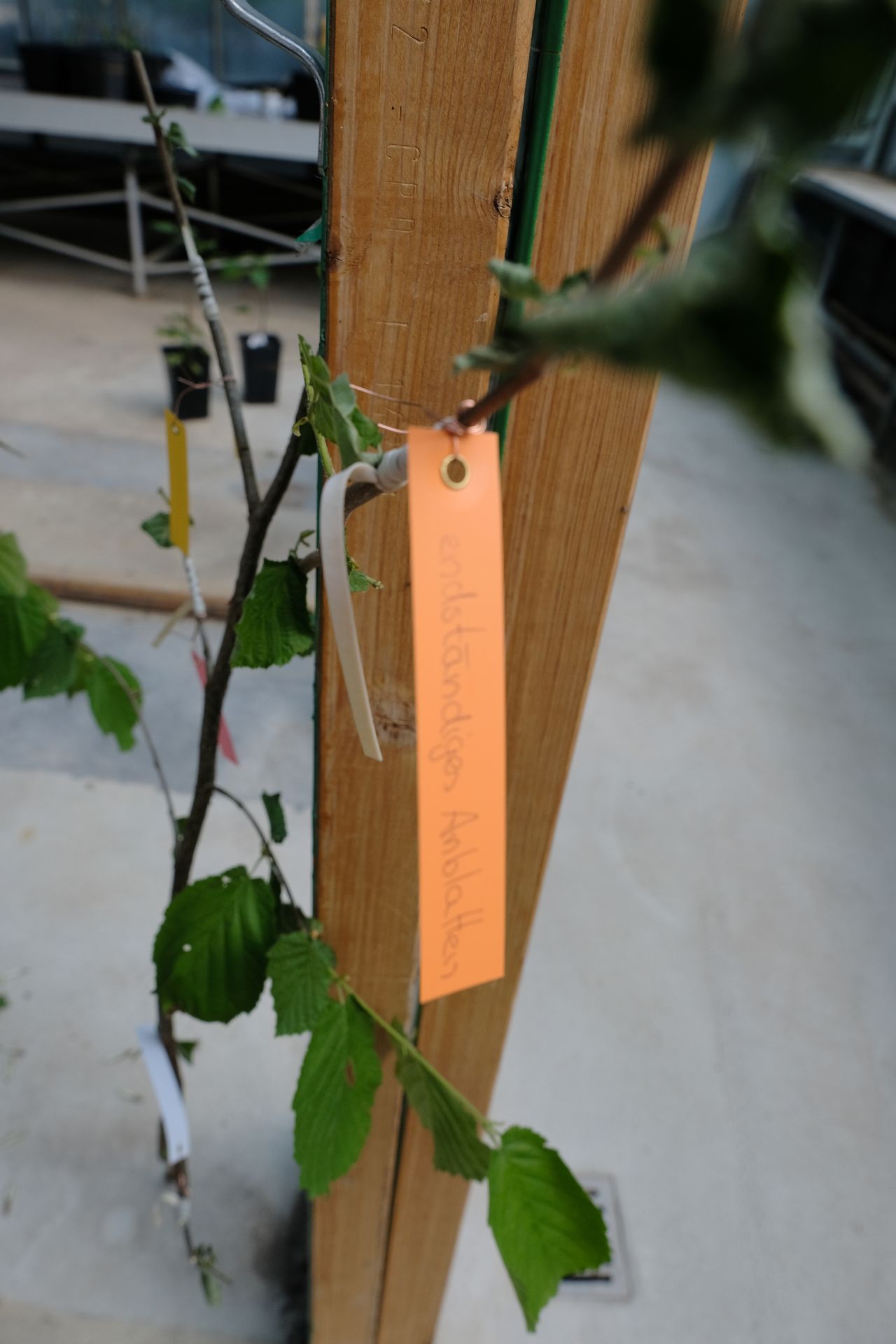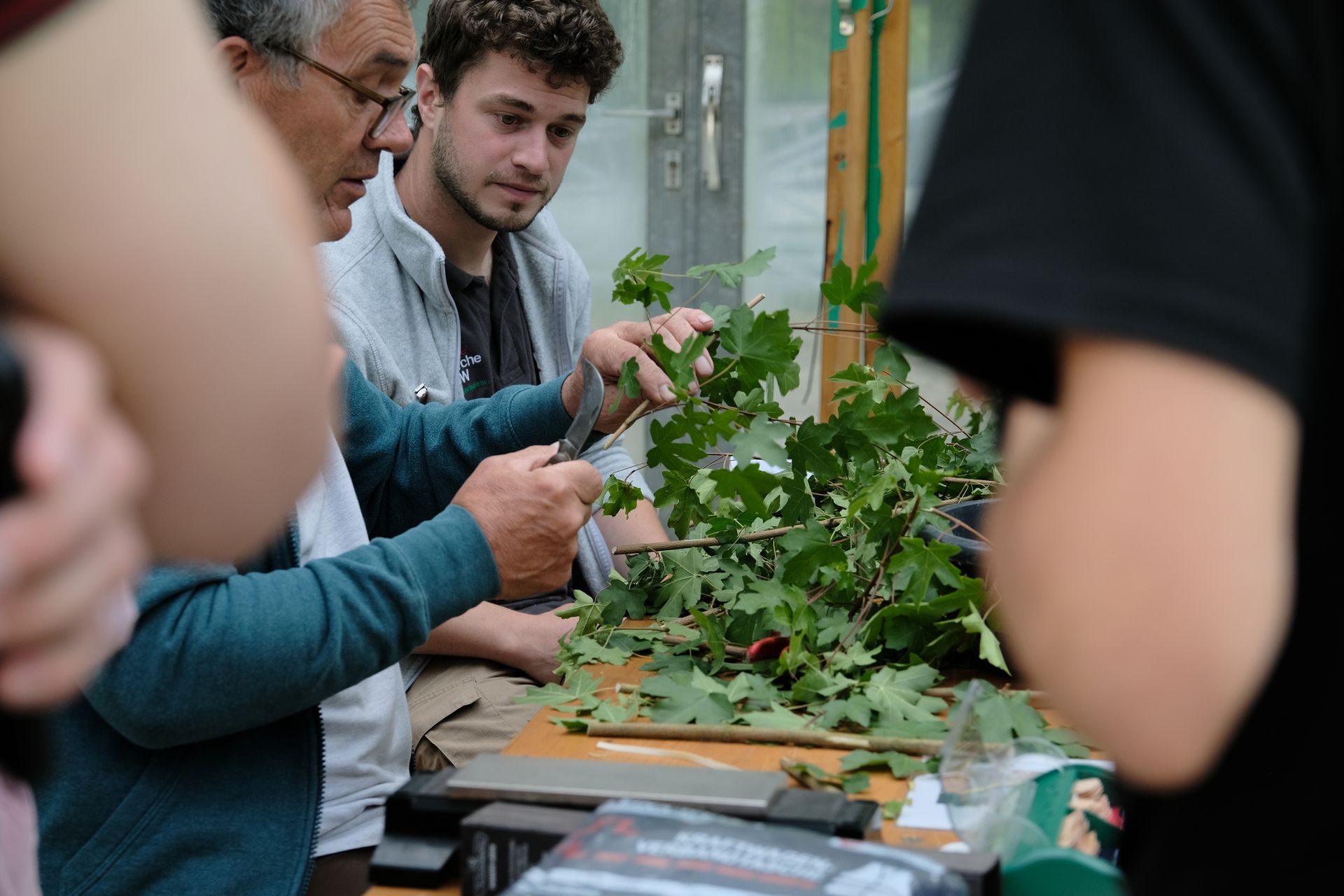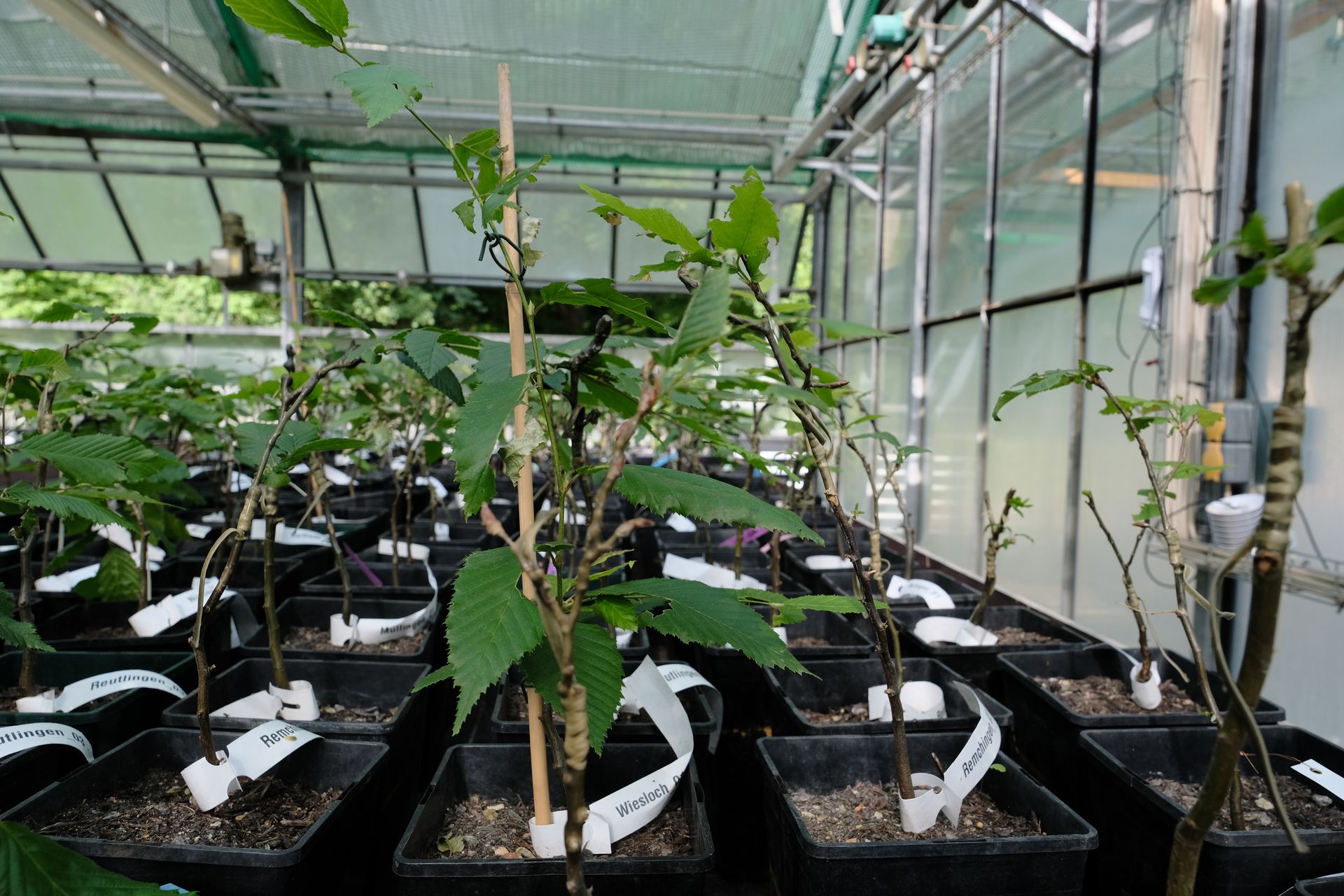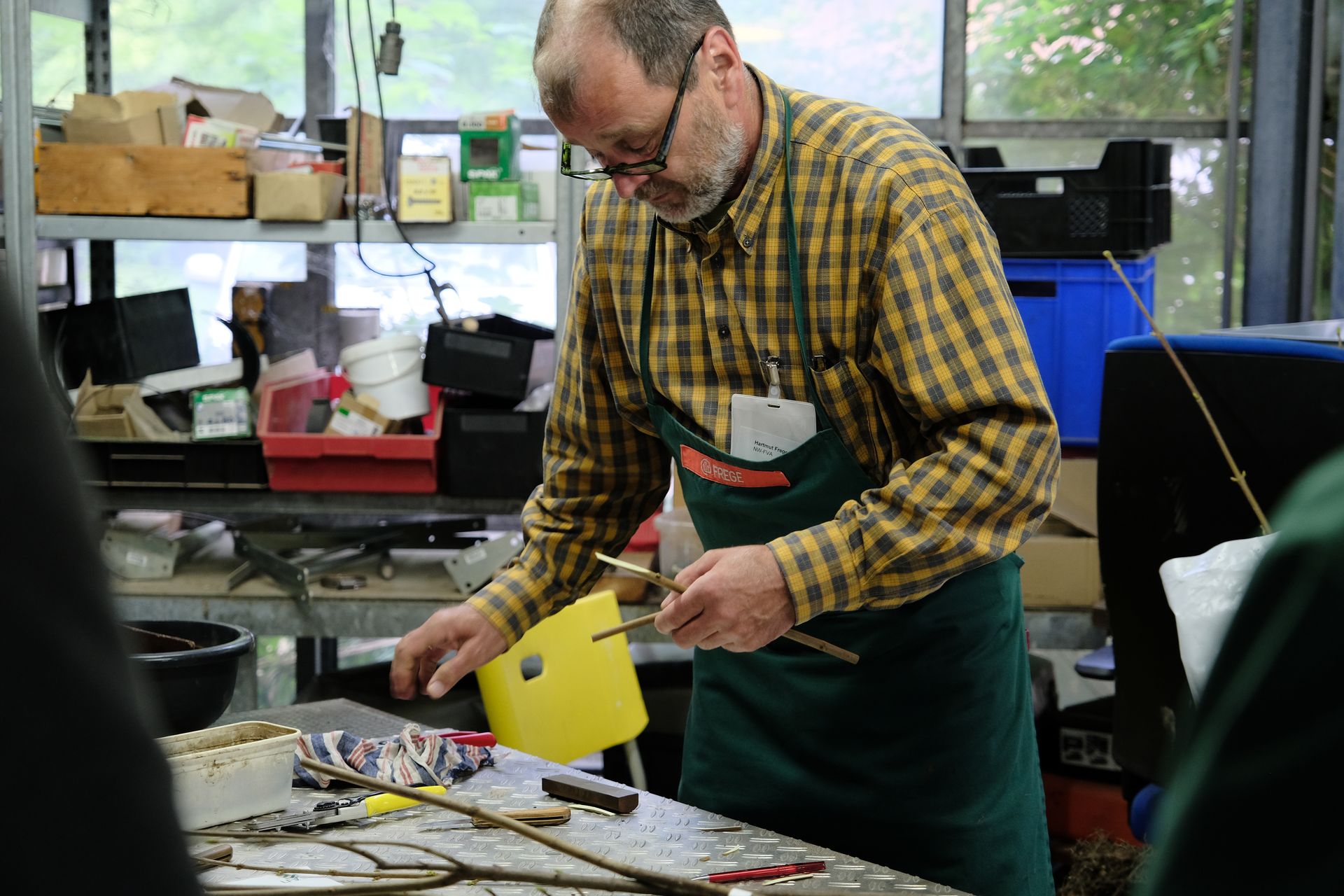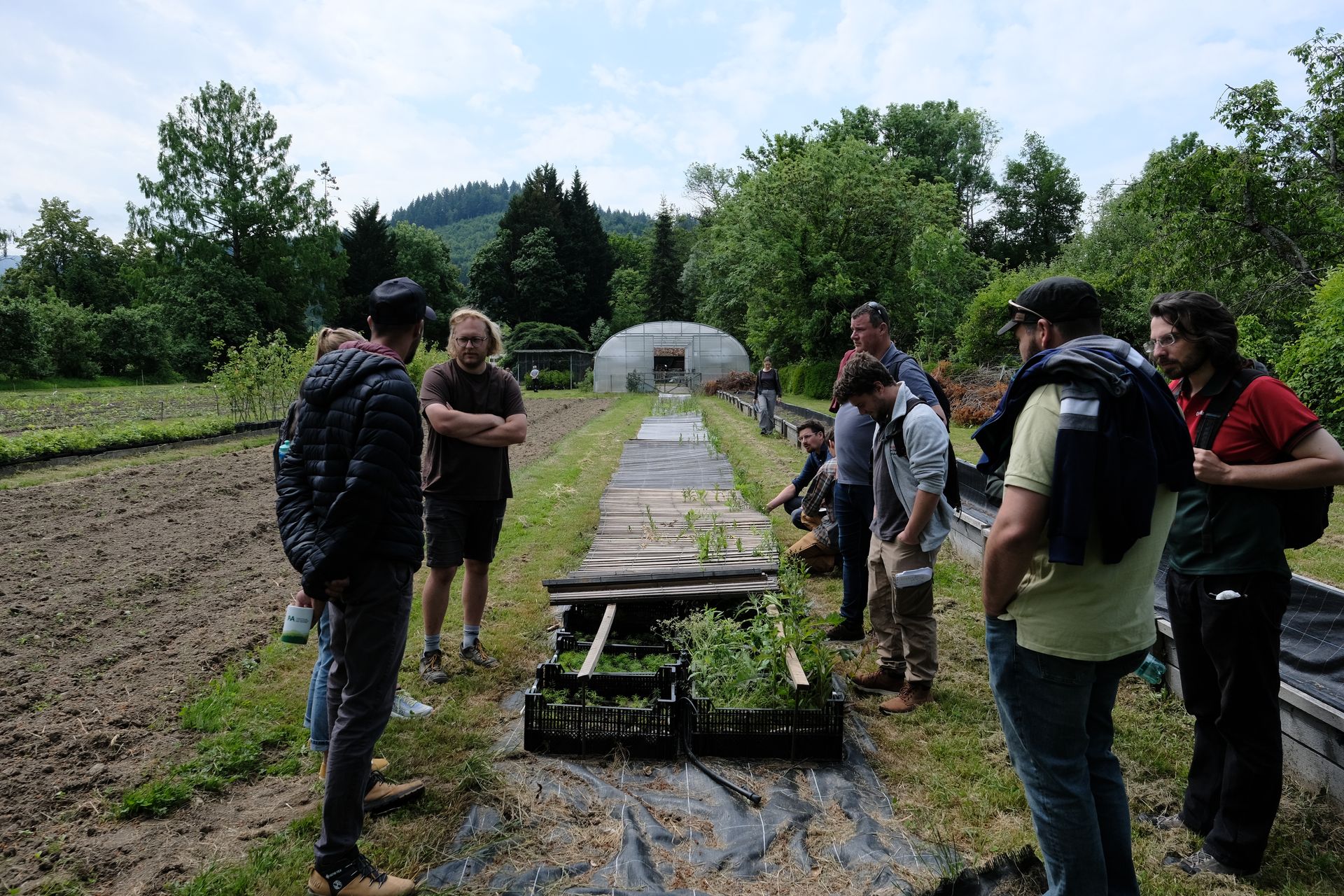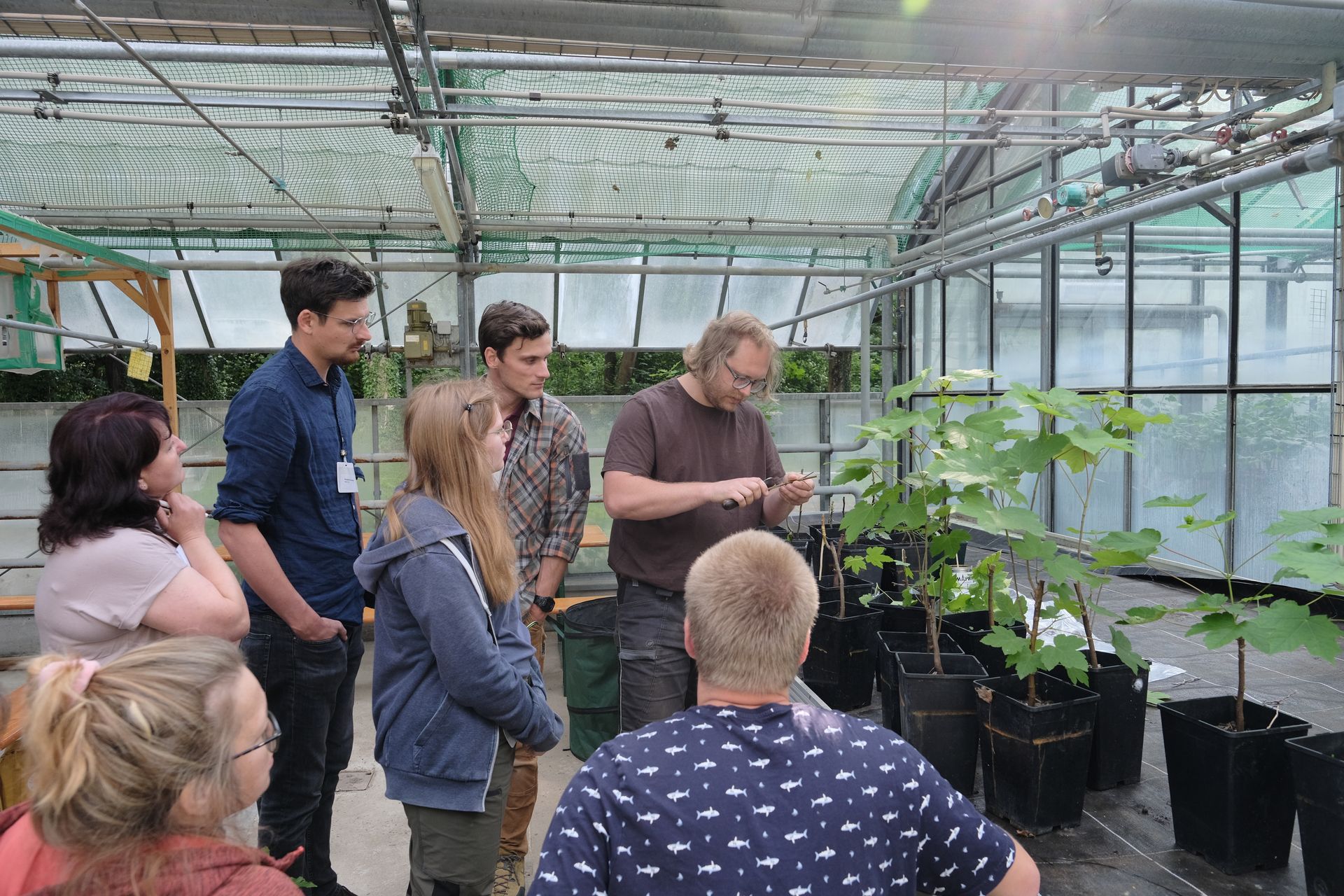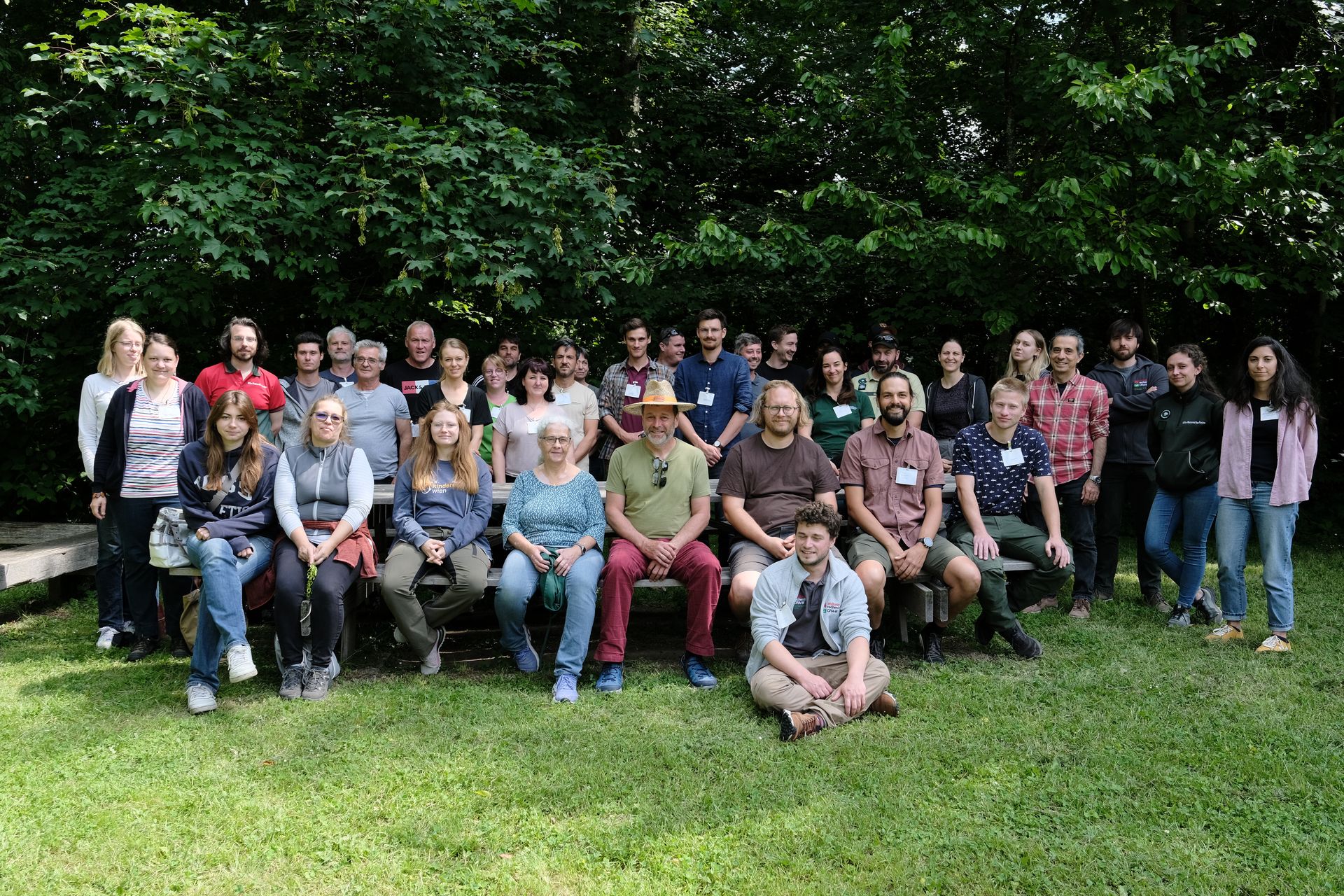The grafting workshop was organized by the nursery team of FVA Baden-Württemberg in Freiburg (from May 20 to May 22, 2025) with the aim to gather forest professionnals and anyone who has interest and experience in grafting of forest trees.
The workshop hosted 31 participants from Austria, Belgium, France, Germany and Luxemburg, among which representatives from MigFoRest partners CRA-W, ONF and INBO, next to organizer FVA. During the three-day workshop, seasoned experts passed on their insights to their junior colleagues, while also facilitating the sharing of best practices between various organizations from different countries.
Grafting in the practice
Grafting is a technique used for the vegetative reproduction of woody plants. It involves attaching two sections of living plant tissue so that they connect and eventually develop as a single plant. On the other hand, budding consists of transferring a bud from one plant to another to encourage its growth. Both techniques have been practiced during the workshop.
Several different types of grafting and budding can be used in vegetative propagation of the forest trees. The workshop aimed to facilitate a hands-on sharing of experiences providing the materials and tools and allowing all attendees to practice various grafting techniques. It also offered time and space to discuss the difficulties and hurdles, along with strategies for overcoming them.
The practiced methods include:
- side veneer grafting
- apical grafting
- whip and tongue grafting
- cleft grafting
- wedge grafting
- T - budding
- chip budding
On the second day, the group visited The Schott Tree Nursery in Leiselheim im Kaiserstuhl, a specialist in nut trees grafting and mechanical grafting..
The workshop was concluded with the visit to the Liliental Forestry Research site, where the topics of establishing of seed orchards and clone collections were discussed. Several seed orchards, clone collections, progeny and provenance test sites were visited and presented, including:
- Seed orchards of Prunus avium, montane Picea abies and Pinus sylvestris, with clones from Black Forrest,
- Clonal archives of Acer pseudoplatanus,
- Provenance test of Pinus nigra
- Progeny test of Juglans nigra and progeny test with Quercus robur, Quercus petraea and Quercus pubescens from ACORN project, particularly focusing on assisted migration (assisted gene flow).
From a MigFoRest perspective, it was very insightful to see and learn on the grafting of species that have been selected for assisted migration, such as Quercus pubescens as said, but also Quercus robur, Quercus petraea, Pinus nigra or Pinus sylvestris. The MigFoRest project includes the implementation of at least three seed orchards in different regions in North-West Europe.
